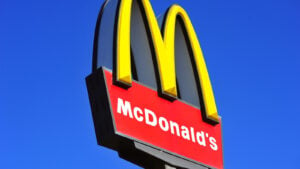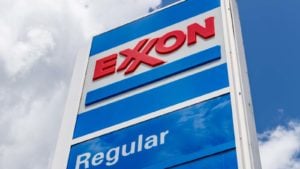The first stock stands tall on the bedrock of AI integration, revolutionizing industries with innovation at its core. The second one is the titan of the Quick Service Restaurant industry, showcasing marketing prowess and digital adaptation, transcending consumer expectations. Meanwhile, the third navigates the energy domain with strategic imperatives, emphasizing shareholder returns while embracing an evolving energy landscape.
Read more about their foundational strengths, strategic initiatives, and pivotal roles in a forever portfolio.
Microsoft (MSFT)

Microsoft’s (NASDAQ:MSFT) products are its forever moat. Starting with the fusion of AI across the Microsoft ecosystem, AI is an emerging fundamental with various facets. For instance, GitHub Copilot has garnered over 1 million paid users and witnessed a 40% increase in business subscriptions, with a significant global uptake.
The AI-driven assistance extends to the Power Platform, enabling natural language app creation and data analysis. Over 126K organizations utilize Copilot. The company’s dedication to developer productivity is showcased in GitHub’s exponential growth, which has increased fourfold since its acquisition.
Now, moving to cloud dominance, Microsoft’s Intelligent Data Platform serves over 73% of the Fortune 1000. Similarly, Microsoft Fabric has more than 16K active customers, encompassing over 50% of the Fortune 500, highlighting Microsoft’s stronghold in consolidating data assets for enterprises.
Dynamics 365’s consistent market share gain for ten consecutive quarters highlights its robustness in business applications. Microsoft is leveraging AI to differentiate its business application products by integrating Pilot-led transformations atop existing CRM systems, holding over 15K organizations in the customer base. Hence, this intelligent augmentation is in motion across Dynamics 365’s spectrum, as evident in Dragon Ambient eXperience’s application.
Finally, Copilot’s integration across Microsoft’s suite, including Word, Excel, PowerPoint, and Teams, is substantial for further revenue growth. For instance, Teams has secured over 320 million monthly active users. Similarly, Viva has made significant inroads, capturing organizations like Dell (NYSE:DELL), Lloyds (NYSE:LYG), and PayPal (NASDAQ:PYPL), signifying Microsoft’s solid product transformation.
McDonald’s (MCD)

A $50 billion balance sheet and a formidable credit rating enable McDonald’s (NYSE:MCD) to dominate the food packaging and services sector while ensuring attractive margins for franchisees. The company’s marketing strategy stands out with an annual investment exceeding $4 billion, surpassing its nearest competitor three to four times.
In detail, McDonald’s focuses on scalable campaigns like “Raise Your Arches” and “Famous Orders,” fostering emotional connections with customers globally to boost revenue growth. The emphasis on a unified global marketing approach demonstrates the company’s aim to ensure consistent and impactful messaging across diverse markets. Moreover, its focus on evolving the pricing structure and personalized offerings may support leadership in value propositions.
Additionally, McDonald’s digital and technological lead is another standout fundamental aspect. With over 100 million customer registrations last year and a loyalty program boasting 150 million active users across markets, the company capitalizes on its digital ecosystem’s potential.
Therefore, leveraging machine learning and data analytics, McDonald’s plans to personalize digital offers with greater precision, signifying a targeted approach that maximizes return on investment in discounting while maintaining overall brand value. As a result, McDonald’s has positioned itself by consolidating its strengths to solidify its position as a QSR leader.
Exxon Mobil (XOM)

Recently, Exxon Mobil (NYSE:XOM) laid out a strategic plan with five primary priorities focused on shareholder returns. The plan is based on substantial progress and anticipates considerable growth.
For instance, XOM projects a $14 billion rise in earnings and cash flow over four years, a 16% return on capital employed by 2027, and a structural cost savings of approximately $15 billion by 2027. The company also foresees a surplus cash potential of $80 billion through 2027 and plans to increase annual share repurchases to $20 billion by 2025 while maintaining a consistent capital expenditure range from 2024 to 2027.
Exxon Mobil’s strengths lie in its financial robustness, exemplified by a strong balance sheet, ample cash reserves, and disciplined capital allocation. Moreover, the strategic focus on low-carbon businesses such as biofuels, hydrogen, and carbon capture showcases the company’s commitment to an energy transition.
Additionally, uncertainties surrounding market developments, technology adoption, policy support, and customer commitments in the low-carbon sector pose challenges. However, the company’s strategy of pacing investments to align with market developments mitigates risks while aiming for a competitive edge.
On the other hand, operational excellence remains a core pillar, highlighted by ongoing structural cost savings ($9 billion saved and an additional $6 billion by 2027) and efficiency improvements without compromising safety or reliability. The company’s emphasis on innovation through technological advancements like Proxima and lithium production underscores its focus on staying competitive and adaptive.
Lastly, the prudent approach to managing geopolitical and legal risks, such as the Guyana border dispute, through arbitration processes and reliance on international norms showcases its prudent risk management strategy.
As of this writing, Yiannis Zourmpanos held a long position in PYPL. The opinions expressed in this article are those of the writer, subject to the InvestorPlace.com Publishing Guidelines.
Yiannis Zourmpanos is the founder of Yiazou Capital Research, a stock-market research platform designed to elevate the due diligence process through in-depth business analysis.
